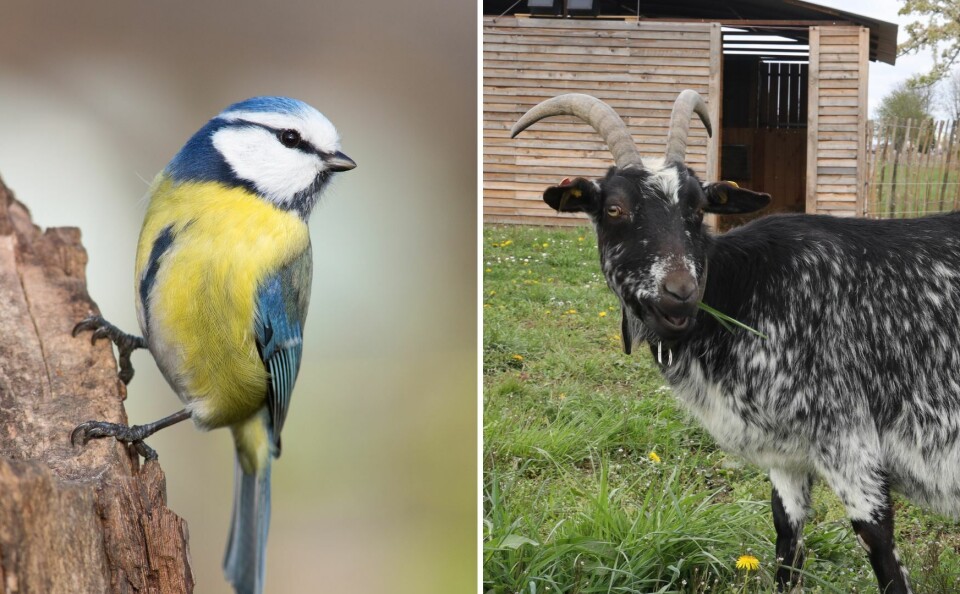-
Spring sees return of Asian hornets in France: Action to take now
The hornets are particularly damaging to bee populations
-
Chance to go owl-spotting in France this weekend
The ‘Nuits de la chouette’ are intended to help people spot the birds of prey and learn more about them
-
Wildlife spotters warned not to get too close to marine animals such as seals on French coast
It is acceptable to watch them but only from a distance of over 100m
Blue tits and goats are French city’s secret weapons against invaders
Nancy is running natural experiments to combat processionary caterpillars and Japanese knotweed

An experiment is being run in Nancy to see if boosting the number of blue tits and coal tits will reduce the number of processionary caterpillars in the town’s parks.
The town saw increasing numbers of people with allergic reactions to oak processionary caterpillars between 2009 and 2019 and started a program to control them.
Birds could stop insecticide use
Like the better known pine processionary caterpillars, oak ones are covered with fine hairs which cause itching and allergic reactions.
They live in oak trees, but when threatened expulse their hairs into the atmosphere, so that people can be affected without ever seeing the insect.
“We have been controlling them with biological sprays, and if there are peaks of activity might do so again, but by encouraging the birds, we hope to avoid seeing the type of peak we have seen in the past,” said Loïc Delagneau, the head of the biodiversity service in the city, which includes parks and gardens.
Long term project
The city put up 50 nest boxes with different diameter holes for coal tits and blue tits in the spring of 2021 in two parks in the city where there are many oak trees.
“They are not all yet occupied, but it often takes three or four years before they are accepted by the birds,” said Dahman Richter, the councillor delegated to look after animal welfare and biodiversity.
Discarded cocoons still dangerous
Pine processionary caterpillars are seen moving across the ground in clumps or lines, usually between January and April, while oak processionary caterpillars are active in trees between April and July.
Even after they have transformed into butterflies, the cocoons they leave behind can release the poisonous hairs into the air.
Residents can help
Blue tits and coal tits, both common garden birds, eat insects and researchers estimate that they eat up to 500 of the caterpillars a day, especially in the spring and early summer when they have young to feed.
The city of Nancy is also encouraging residents to put up tit nest boxes, but not too many in one garden, because when there are too many tits start eating the young of other tits to keep the population down.
“We are hoping that an increased number of nesting birds will mean we do not have a repeat of a peak in the number of people suffering from the painful irritation caused by these caterpillars,” said Mr Richter.
Rare breed goats mow grass
Nancy, which has also used a herd of goats to “mow” the grass in one of its parks since 2007, is now trying them in a cemetery where Japanese knotweed is a problem.
The goats, of the Lorraine breed which almost disappeared after being dropped by commercial goat farms for more productive Swiss breeds, have been moved onto a hectare of pasture next to a cemetery where knotweed was spreading.
They are behind a double mobile fence with both a wood and an electric barrier to stop them escaping.
Goats like Japanese knotweed
“There has been some anecdotal evidence that goats like Japanese knotweed and so we decided to see if we could carry out some proper research to see if they can control it,” said Mr Delagneau.
“The first results have been very encouraging – they seem to like the taste and seek it out.”
The experiment is being monitored by a local agricultural research station, and students were involved in preparing the paddock and making sure a plant toxic for goats (the morel noir) was removed.
Up to five years for plant to die
If it proves to be successful, and the knotweed is controlled in four or five years' time, it will be the first time that an official experiment using goats has succeeded.
Japanese knotweed is causing problems all over France and Europe, because it is very fast growing, with dense vegetation which smothers other plants.
It also has very deep and strong roots, and can grow quickly from a small fragment of root, which makes it difficult to dig out.
The roots can enter walls and foundations, causing structural problems.
If it is cut back every year, it normally takes four or five years for the plant to die, and it is hoped that is what will happen with the patch being grazed by the goats in Nancy.
Related articles
What to do if your pet is hurt by processionary caterpillars in France
How can we stop the spread of Japanese knotweed to our French garden?
Green city Poitiers says ‘non’ to French Ville Fleurie competition
























